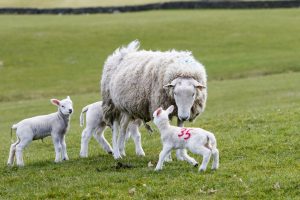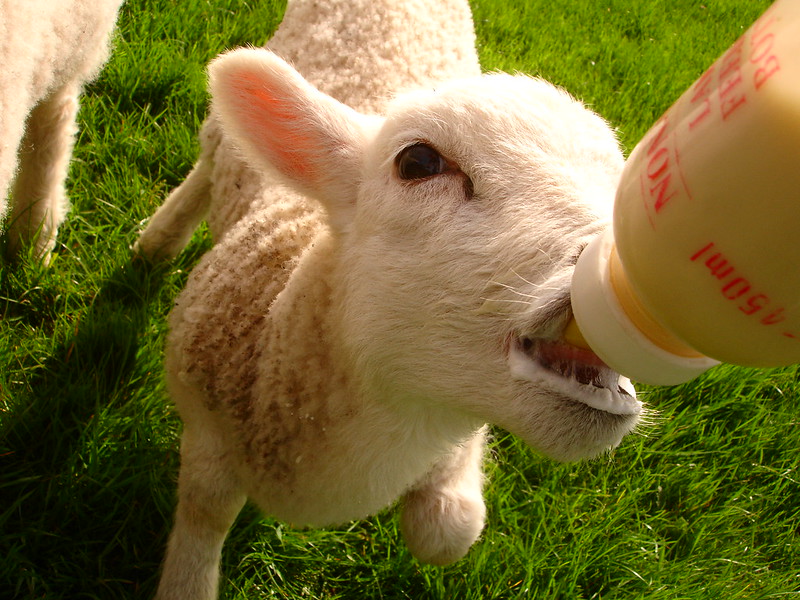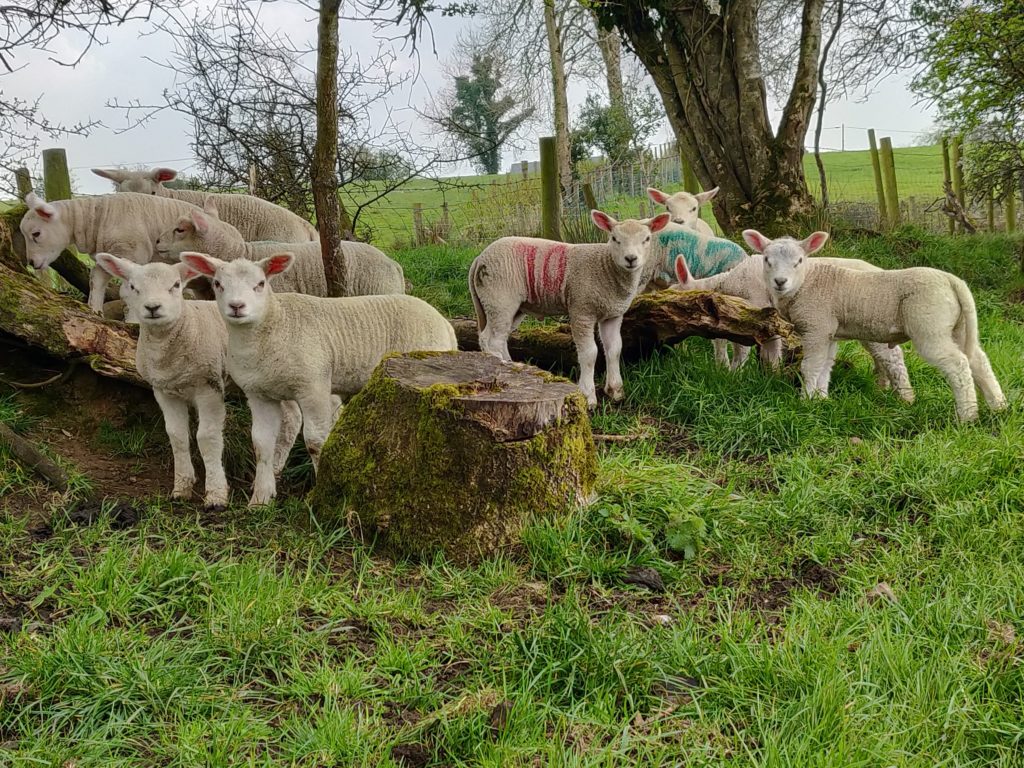The triplet lamb debate – What to do with the third lamb?
March 10, 2020
Gareth Beacom CAFRE Beef & Sheep Adviser Enniskillen
Reports from Business Development Group members indicate very good scanning results for ewes. With many flocks now scanning well over 200%, it is inevitable that many ewes will produce triplets. So what are the options for these triplet lambs this spring?
Selling as pets
This is probably the simplest option, particularly at the start of the lambing season. Farmers are reporting prices from £25 – £35 and even higher for stronger lambs. However as the spring progresses, surplus pet lambs become more plentiful. From mid-March onwards the demand for pets often decreases. While selling them may still be an option, prices obtained will depend usually on the strength and quality of pet lamb sold. This begs the question if these strong lambs should be sold or kept as all studies show that lambs with a higher birthweight have a higher survival rate as well as a higher daily liveweight gain. Selling as pets also reduced labour requirements at an already busy and often stressful time for farmers.
 Keeping Triplets on the ewe
Keeping Triplets on the ewe
Another option is to keep lambs on the ewe. Studies have shown that ewes are capable of rearing three lambs if suitably fed. However, if this is to be successful ewes need to be in a good Body Condition Score and lambs ideally need to be evenly sized. These ewes will need to be offered concentrate for 4 – 6 weeks post lambing along with high quality grazing. Creep feed will also need to be offered to lambs. This can be a successful system, but it requires a high level of management and even with best practice problems can develop. Mastitis in particular is often cited as one of the main reasons for farmers avoiding this option.
Artificially rearing pets on a feeder
This is becoming a more popular option. Whilst pet lambs require a high level of management, this system simplifies the management of the main sheep flock. All ewes at grass will only be rearing one or two lambs and with pet lambs batch reared and managed separately. The two main options farmers are opting for in this system are ab-libitum milk feeders where fresh milk is added daily or automated feeders which mix the milk and self-clean.
The ab-libitum feeders typically cost from £200 – £300 and are traditionally the more popular option. However milk needs to be added and feeders cleaned daily – adding another chore at a busy time of year.
Fully automated feeders reduce the work load significantly however are more expensive with reported prices from £3,000 – £3,500. Although assuming it lasts 20 years this reduces the annual cost and still making them a realistic option.
Economics of rearing pet lambs
The economics of rearing pet lambs can vary depending on system, however where well managed with disease and mortality are kept to a minimum a positive margin can be generated.
Detailed below are some typical costings.
Milk replacer cost
1 Litre/day for weeks 1-2 & 1.5 litres for weeks 3-4 = 35 litres (7Kg of milk replacer)
Total milk cost @ 50p/litre (£12.50/5kg) = £17.50
Meal Cost
3-6 weeks @ 0.5kg/day = 10.5kilos
6 weeks – 4.5 months @ 1.2kg/day = 109kilos
Assuming most of this meal is bought in small bags at a price of £300/t (£7.50/25kg bag), this brings the total meal cost to approximately £36, leaving a total feed cost of £53.50 per lamb. With some miscellaneous costs accounted for (straw, vaccines and doses – roughly £5/lamb) a total variable cost of £58.50 should be achievable.

Whilst feed costs are high in this system, daily liveweight gains can also be high. These lambs can typically achieve a carcass weight of 20-21 kilos by 120 days of age. This means some pet lambs should be ready in the first lamb draft before the normal annual price drop. With a lamb price of £4.00 per kilo (£80-£85 / lamb) this leaves a potential breakeven price for pets of £20.00-£25.00.
The success of this system is highly dependent on low mortality leaving high levels of stockmanship crucial. Due to the intensive nature of these lambs an early coccidiosis dose will be required (from four weeks). A clostridial vaccine will also be required from three weeks of age; the risks these lambs getting little or no natural colostrum from their mother may decrease lambs immunity to disease. Digestive upsets are also highly reported in pet lambs and meaning any change in diet needs to be done gradually. Fresh water and an appropriate fibre source (either from roughage or via the meal) must also be available at all times.
Summary
Irrespective of what system is employed the success of each will be determined by ensuring healthy viable lambs are born. Achieving optimum pre lambing nutrition for triplet bearing ewes will optimise lamb size and help reduce lamb mortality.
The numbers of pet lambs can also be minimised by cross fostering as many as possible onto ewes with singles.
Litter sizes have generally increased in recent times as farmers recognise that litter size is a key factor in lamb output and profitability.
If these extra lambs are not managed carefully with a cost effective system put in place they will not deliver the anticipated extra returns.

